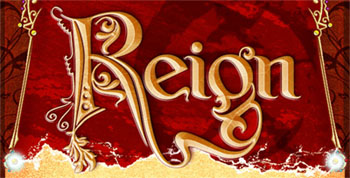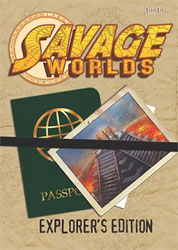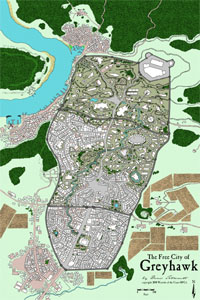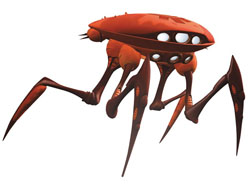 In Ptolus, the House of the Sacred Heat believes in the divine healing power of fire. They are not priests and they do not have truly holy magic, but their techniques “serve the needs of Ptolusites who cannot afford to pay a temple hundreds of gold coins to heal a wound or deal with an illness.”
In Ptolus, the House of the Sacred Heat believes in the divine healing power of fire. They are not priests and they do not have truly holy magic, but their techniques “serve the needs of Ptolusites who cannot afford to pay a temple hundreds of gold coins to heal a wound or deal with an illness.”
This concept of fantastical healing lying somewhere between the naturalistic limits of the Heal skill and the magical extremes of divine magic has always been very appealing to me. Unfortunately, the purview of the sacred heat wasn’t given any mechanical definition. Without that mechanical definition, there’s no compelling reason for the PCs to ever interact with the Healers of the Sacred Heat. As a result, in a setting already teeming with activity, the Sacred Heat is a non-entity.
Reading through Reign t’other day, however, I found the esoteric discipline of Truil Bodywork. Greg Stolze describes this discipline, in part, by writing: “Some Truils argue, quite seriously, that bodywork functions by compressing a month’s suffering into ten or fifteen minutes. The bodyworkers themselves just roll their eyes at the jibe.”
Reign is built on the One-Roll Engine (ORE), so the pain-for-gain mechanics of Truil Bodywork don’t directly translate. But the basic concept was inspiring. Here’s the Healer of the Sacred Heat feat:
HEALER OF THE SACRED HEAT
Prerequisite: Heal 5 ranks
Benefit: The character gains access to the Healing Arts of the Sacred Heat. As long as they have access to an open flame, they gain a +2 circumstance bonus to Heal checks and they can also use any of the following abilities.
Burning Out the Poison: By using flame and heat applied to specific locations on the body, a Healer of the Sacred Heat can attempt to burn a poison out of a patient’s body. (Some ingested poisons will also require the patient to swallow specially prepared coals.) This treatments takes 1 round and deals 1d6 points of nonlethal damage to the patient, but if the healer succeeds on a Heal check with a DC equal to that of the original poison + 5 the patient is completely cured. (They suffer no additional effects from the poison and any temporary effects are ended. However, the treatment does not reverse instantaneous effects such as hit point damage, temporary ability damage, and the like.)
Cooling the Disease: By using strategically placed flames or heat sources around a patient’s body, a Healer of the Sacred Heat can create a biorhythmic vortex which will draw heat out of the body. As the heat departs the body, it draws non-magical diseases with it. The treatment takes 10 minutes and deals 1d6 points of nonlethal damage to the patient due to the sudden chilling of their body, but if the healer succeeds on a Heal check with a DC equal to that of the original disease +5 the patient will automatically succeed on their next saving throw against the disease.
Cauterizing the Wound: With 10 minutes of work and a successful Heal check (DC 15), a Healer of the Sacred Heat can convert lethal damage to nonlethal damage equal to their margin of success. A patient receiving this treatment also suffers 1d6 points of additional nonlethal damage due to the strain placed on their body by the technique.
DESIGN NOTES
I’m tempted to add a “once per day per patient” limitation to Cauterizing the Wound, but I’m not sure it’s actually necessary. What do y’all think?
This material is covered by the Open Game License.














